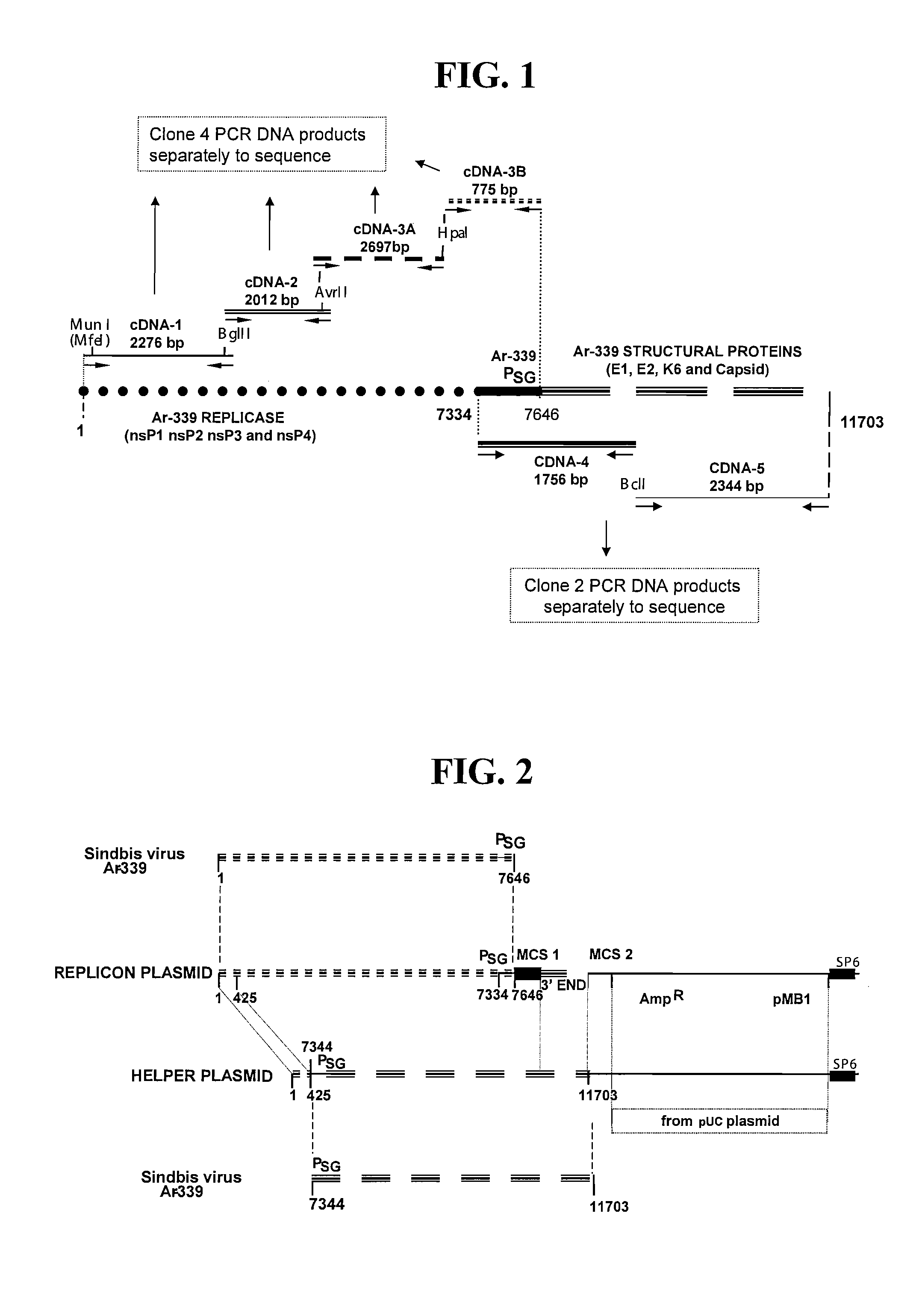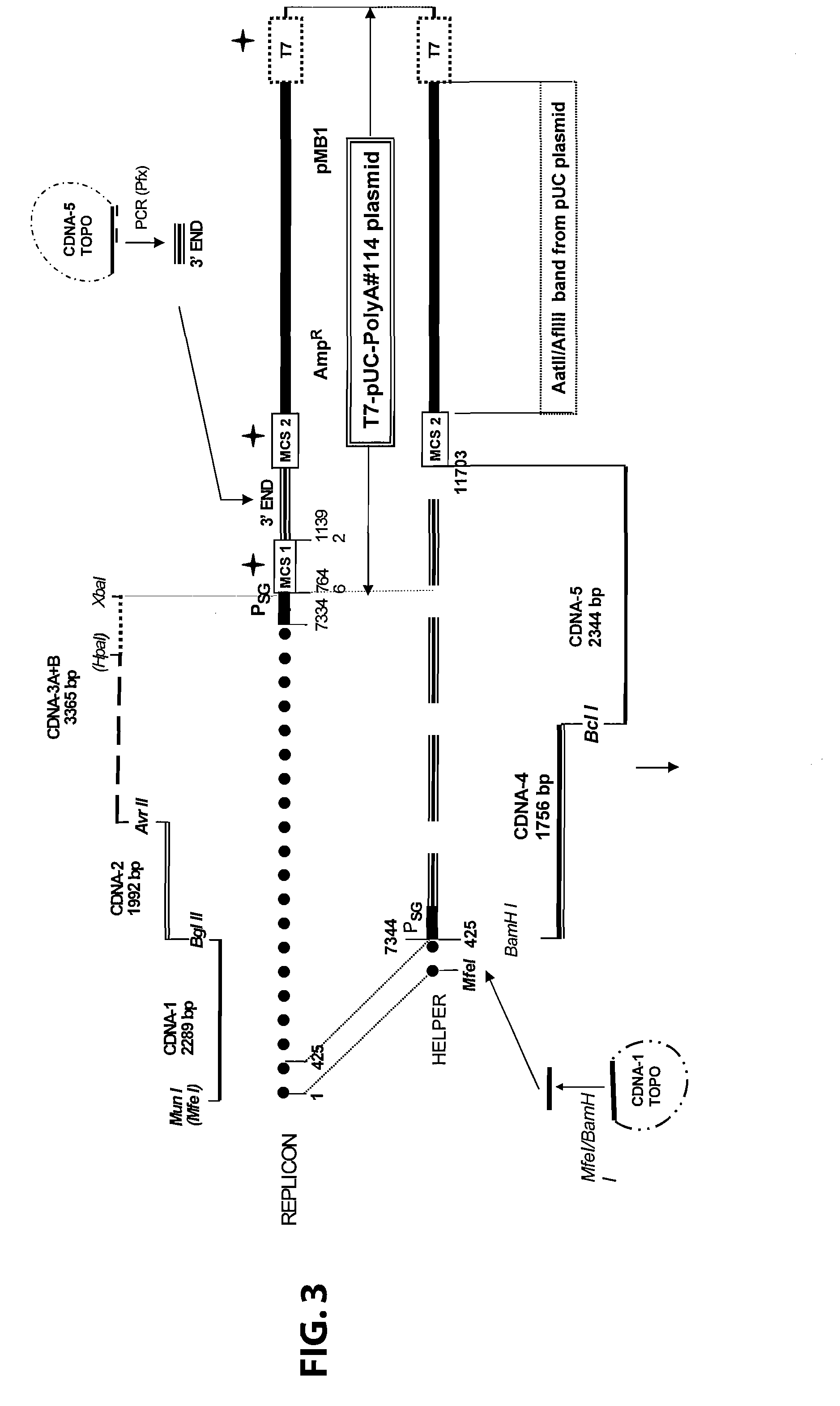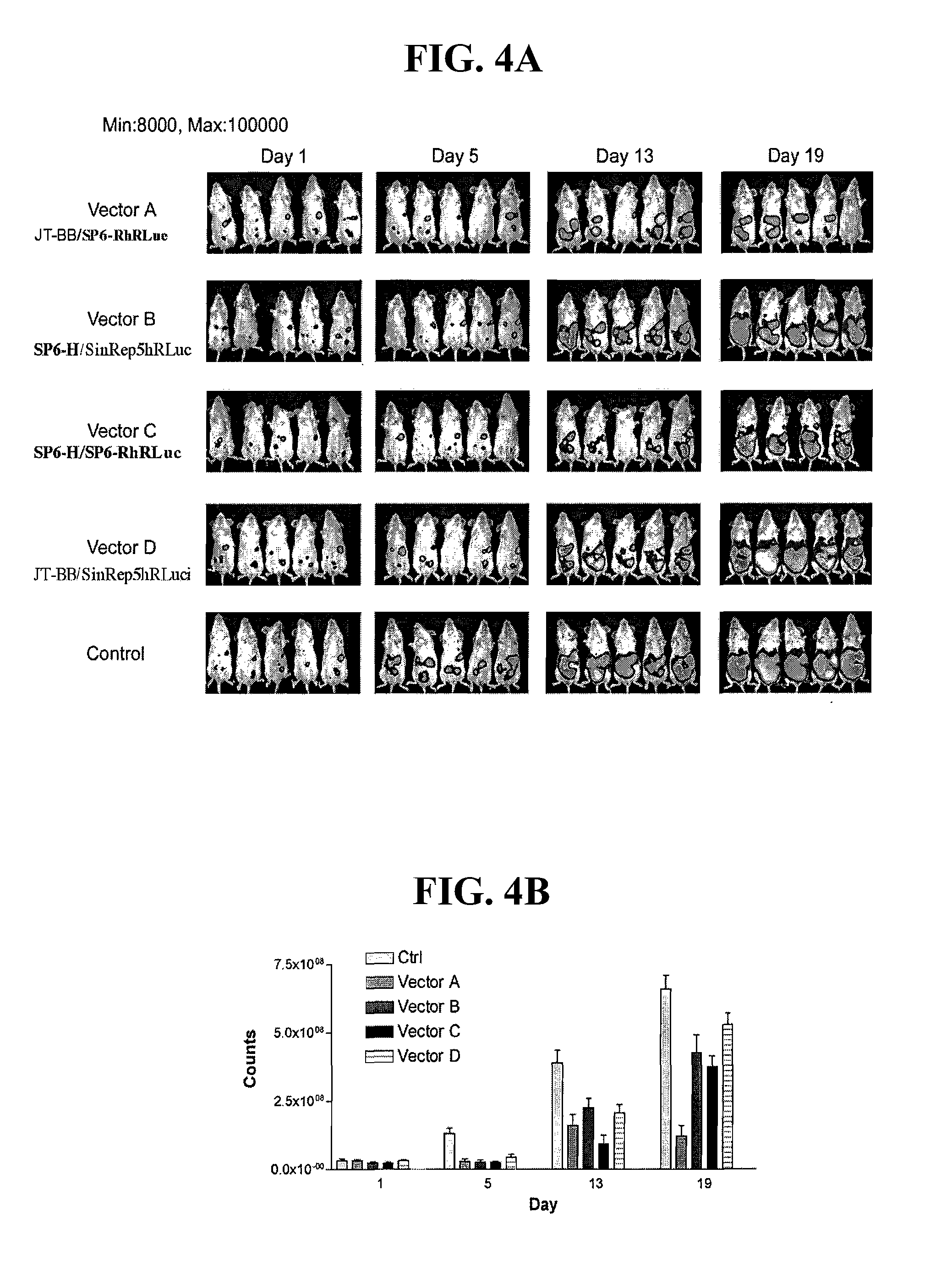Defective sindbis viral vectors
a technology of sindbis and viral vectors, applied in animal repellents, drug compositions, peptide sources, etc., can solve the problems that the survival rate of all mice in these tumor models has not yet been achieved, and achieve the effect of suppressing the ability to target metastatic tumor implants, reducing tumor mortality, and reducing tumor mortality
- Summary
- Abstract
- Description
- Claims
- Application Information
AI Technical Summary
Benefits of technology
Problems solved by technology
Method used
Image
Examples
example 1
[0070]Sindbis cDNA Cloning
[0071]Common Techniques
[0072]Virus Propagation
[0073]Sindbis virus strain Ar-339 (Original) was obtained from ATCC (Manassas, Va., Item #VR-68) and propagated on a secondary chicken embryo fibroblast cell line, CEF. Cells were cultured in EMEM media (BioWhittaker, cat#12-684) supplemented with 10% Fetal bovine sera, NaHCO3 1.5 g / l; 1-Glutamine, 292 mg / l and Penicillin / Streptomycin, 100 U / ml. Two T-75 flasks with 80% confluent CEF cell monolayers, were infected with 2.5×107 pfu and 5×107 pfu, respectively, of Sindbis virus Ar-339, diluted in 1 ml of Opti-Mem I media (GIBCO-BRL Invitrogen, San Diego Calif.; cat#31985-070) supplemented with 0.7 μM CaCl2. Virus-infected cells were incubated at 37° C. for 1 h, 10 ml of EMEM media / flask added, and cells were incubated overnight at 37° C. Supernatants containing the Sindbis “innocula” were harvested and stored at −80° C. until used in further infections. CEF cells were collected for total RNA extraction.
[0074]RNA E...
example 2
[0106]Cells. BHK-21, and ES-2 cells were obtained from the American Type Culture Collection (ATCC). BHK-21 cells were maintained in αMEM (JRH Bioscience) with 5% FBS. ES-2 cells were derived from a patient with clear cell carcinoma, a type of ovarian cancer that has a poor prognosis and is resistant to several chemotherapeutic agents including cisplatin. ES-2 cells were cultured in McCoy's 5A medium (Mediatech) with 5% FBS. All basal media were supplemented with 100 μg / ml of penicillin-streptomycin and 0.5 μg / ml of amphotericin B (both from Mediatech). ES-2 / Fluc cells were derived from the ES-2 line by transfection of a plasmid, pIRES2-Luc / EGFP, that expresses a bicistronic mRNA transcript containing both firefly luciferase and EGFP genes. To construct the pIRES2-Luc / EGFP plasmid, a DNA fragment containing the luciferase gene was obtained from pGL-3 basic plasmid (Promega) and then subcloned into the multicloning sites of the pIRES2-EGFP plasmid (BD Biosciences Clontech).
[0107]The m...
example 3
Biological Properties
[0138]Most of the amino acid differences found between JT and Ar-339 vectors were in the envelope proteins. One of them was related to virus adaptation to BHK-21, E2 Lys 70 to Glu (McNight K et al, 1996) and two of them were located in the receptor-binding domain of the E2 protein. To analyze if the amino acid changes had any effect on the viral vector's infectivity, JT, Ar-339 and chimeric viral vectors were produced and titered in three cell lines: BHK-21 (baby hamster kidney), ES-2 and Mosec human and mouse ovarian cancer cell lines respectively. The results are shown in Table VII (Appendix A). Vectors that carry JT-BB helper (JT-BB / SP6-ARepLacZ and JT-BB / JT-RepLacZ) had titers two logarithms higher in BHK-21 than in the other two cell lines; when the helper was SP6-H, the difference observed was only one log. The infectivity of the vectors in vitro was similar in both ovarian cancer cell lines, ES-2 and Mosec. This difference was observed i...
PUM
| Property | Measurement | Unit |
|---|---|---|
| concentration | aaaaa | aaaaa |
| concentration | aaaaa | aaaaa |
| temperature | aaaaa | aaaaa |
Abstract
Description
Claims
Application Information
 Login to View More
Login to View More - R&D
- Intellectual Property
- Life Sciences
- Materials
- Tech Scout
- Unparalleled Data Quality
- Higher Quality Content
- 60% Fewer Hallucinations
Browse by: Latest US Patents, China's latest patents, Technical Efficacy Thesaurus, Application Domain, Technology Topic, Popular Technical Reports.
© 2025 PatSnap. All rights reserved.Legal|Privacy policy|Modern Slavery Act Transparency Statement|Sitemap|About US| Contact US: help@patsnap.com



